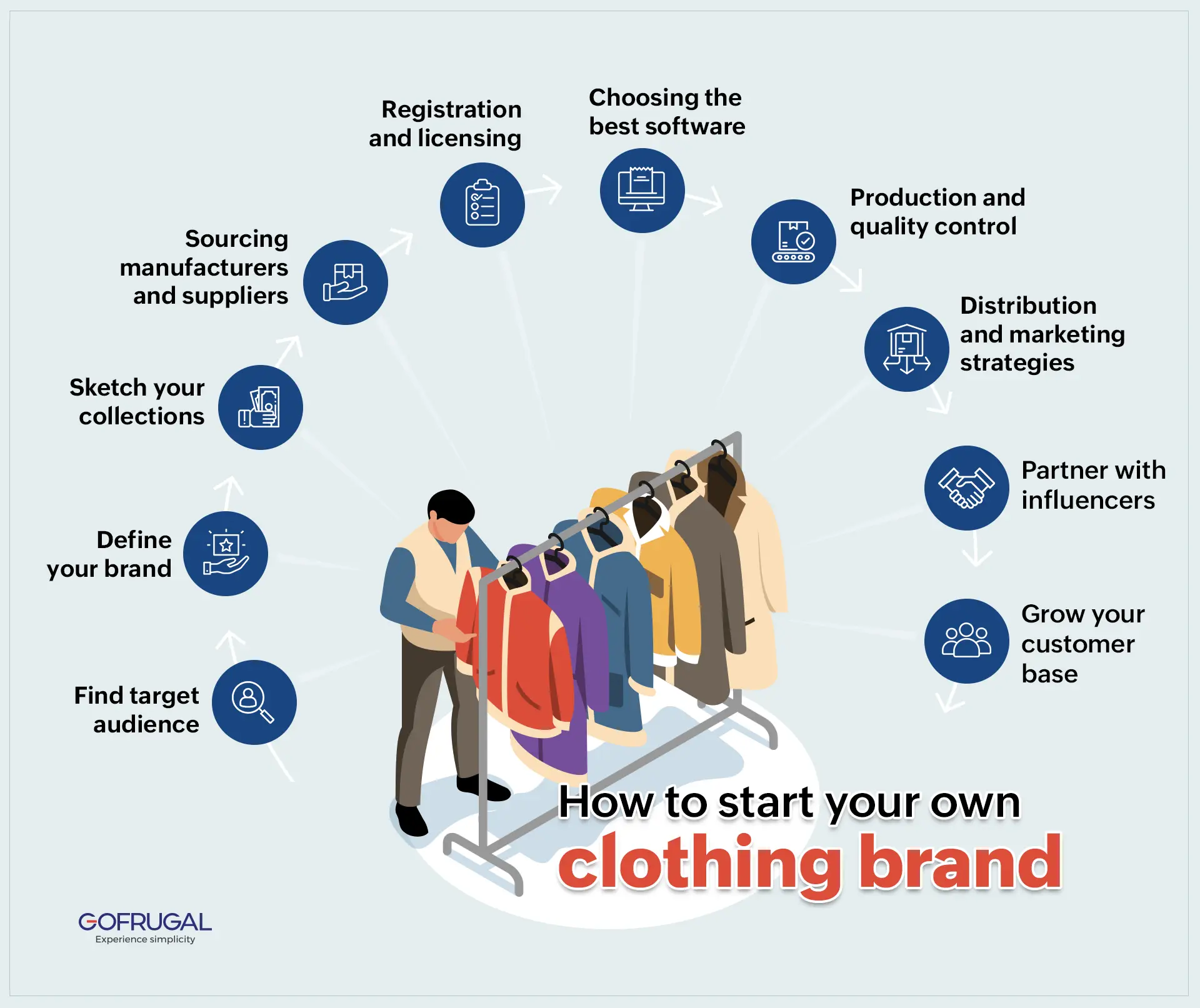Branded Clothing and the Role of Fabric in Defining Your Silhouette
Branded Clothing and the Role of Fabric in Defining Your Silhouette
Blog Article
The Relevance of Lasting Clothes: Exactly How It Impacts the Environment and Your Closet
Lasting garments is increasingly identified for its critical duty in decreasing the ecological impact of the rapid fashion business. By concentrating on green products and honest manufacturing methods, it addresses pressing ecological issues. This shift not just benefits the world but likewise influences consumer choices, resulting in an extra thoughtful technique to closet management. Comprehending these characteristics raises important questions concerning fashion's future and personal obligation in shaping it.
The Environmental Footprint of Quick Fashion

Benefits of Lasting Products
Lasting products use substantial benefits, particularly via environment-friendly fabric selections that reduce ecological injury. These materials also demonstrate resilience and longevity, decreasing the need for constant substitutes. Consequently, they contribute to an extra sustainable apparel industry and promote accountable consumer behavior.
Eco-Friendly Fabric Options
While the fashion business has long been related to quick fads and ecological injury, the increase of green fabric choices offers a transformative possibility. Lasting materials such as natural cotton, hemp, and Tencel have obtained popularity as a result of their lower environmental effect. These materials are commonly created without harmful pesticides and call for less water, reducing their carbon footprint - Branded Clothing. Furthermore, several environment-friendly fabrics are naturally degradable, adding to a round economic situation by decreasing waste. Picking lasting materials not only sustains eco responsible methods however additionally promotes much healthier environments. As consumers end up being a lot more aware of their buying power, the demand for green fabrics encourages brand names to innovate and take on even more sustainable manufacturing methods, eventually profiting the earth and future generations
Longevity and Longevity Advantages
Several consumers are progressively identifying the toughness and longevity benefits of lasting materials in their clothing options. Unlike standard fabrics, sustainable products such as organic cotton, hemp, and recycled polyester are engineered to stand up to damage, causing garments that last longer. This reduced regularity of replacement not just saves consumers cash in time yet also diminishes waste created by fast fashion. In addition, lasting clothing commonly utilizes green production approaches that boost textile toughness, contributing to a decrease in the overall carbon footprint. By buying durable clothing, customers can grow an extra lasting closet while appreciating top notch items that preserve their visual and performance gradually. Durability and durability stand as crucial advantages of picking sustainable materials.
Minimizing Waste Through Lasting Practices
Reducing waste in the fashion business can be attained via ingenious techniques such as upcycling and repurposing products. Additionally, taking on minimal closet techniques urges consumers to focus on quality over amount, eventually reducing clothing intake. With each other, these methods add substantially to a more lasting clothing model.
Upcycling and Repurposing Products
Upcycling and repurposing products have become cutting-edge strategies in the apparel industry, transforming disposed of fabrics right into important new products. This technique not just reduces waste yet additionally motivates imagination and originality in clothing style. By taking old garments and products, designers can produce special items that reflect individual design while reducing the demand for brand-new sources. Additionally, upcycling typically calls for much less energy and water compared to conventional production processes, significantly decreasing the environmental impact of style. As customers end up being more conscious of sustainability, the appeal of upcycled clothes continues to climb, promoting a round economic climate. Ultimately, these techniques contribute to an extra lasting future, where style prioritizes environmental health and wellness over rapid production and consumption.

Minimalist Wardrobe Strategies
As people progressively seek to reduce their environmental impact, taking on minimalist wardrobe approaches has gained grip as a reliable approach to sustainable fashion. These approaches stress quality over amount, encouraging customers to curate a smaller sized collection of flexible, sturdy apparel. By concentrating on ageless items that can be blended and matched, individuals can lower the regularity of purchases and eventually decrease waste.Additionally, minimalism promotes conscious usage, prompting customers to assess the environmental and ethical effects of their options. This method not only cultivates a much more sustainable way of life however additionally simplifies daily decision-making relating to outfit. As individuals embrace minimalist principles, they add to a style society that values sustainability and liable consumerism, eventually resulting in a much more eco-conscious society.
The Role of Moral Labor in Lasting Style
While many customers are increasingly familiar with the ecological repercussions of their garments options, the significance of moral labor methods in lasting style can not be forgotten. Honest labor encompasses reasonable earnings, safe working problems, and regard for employees' rights, forming the backbone of accountable fashion manufacturing. Brands that prioritize honest labor not only boost communities yet additionally established a standard for accountability in the industry.Moreover, the combination of honest practices cultivates openness, enabling customers to make informed selections about their purchases. This practice contrasts greatly with fast fashion's unscrupulous labor versions, which frequently prioritize profit over individuals. By sustaining business dedicated to ethical labor, consumers add to a system that values human dignity along with environmental sustainability. Honest labor is not merely an add-on; it is essential to the broader goal of sustainable fashion, making sure that the pursuit for eco-friendliness does not come at the expenditure of human civil liberties.
The Influence of Lasting Clothing on Carbon Emissions
Lasting apparel has the prospective to greatly reduce carbon emissions connected with the fashion business. Conventional garment production contributes notably to greenhouse gas discharges, mainly because of energy-intensive manufacturing processes and making use of non-renewable sources. On the other hand, sustainable fashion concentrates on environment-friendly materials, such as organic cotton or recycled fibers, which usually require much less energy to produce.Moreover, sustainable brands often tend to embrace a lot more reliable production methods, decreasing waste and lowering general discharges. By focusing on toughness and ageless design, lasting clothing urges customers to buy much less frequently, more decreasing the carbon footprint related to overconsumption.Additionally, many lasting brand names are dedicated to transparency in their supply chains, enabling customers to make enlightened options that align with their worths. Ultimately, moving towards lasting garments can bring about a considerable decrease in carbon discharges, contributing to a healthier world and an extra lasting future for the fashion industry.
Supporting Local Economic Situations With Sustainable Selections
The shift toward lasting apparel not only addresses ecological concerns however additionally substantially benefits regional economies. By selecting lasting fashion, consumers frequently sustain small businesses and local craftsmens, improving community resilience. These business usually operate a smaller scale, prioritizing craftsmanship and ethical practices over mass production.Investing in locally made sustainable apparel fosters work creation and stimulates financial growth within communities. As consumers come to be more conscious of the ecological influence of their acquisitions, they increasingly look for products that mirror their values. This demand motivates local manufacturers to embrace lasting practices, contributing to a circular economy.Moreover, supporting neighborhood companies minimizes transportation exhausts, lining up with eco-conscious consumer habits. The interconnectedness of sustainable garments and neighborhood economic situations emphasizes the essential role that private options play in advertising both ecological and economic health. By cultivating these neighborhood links, communities can thrive while likewise functioning in the direction of an this hyperlink extra lasting future.
Transforming Your Wardrobe: Tips for a Sustainable Wardrobe
As individuals seek to lower their ecological influence, changing a storage room right into a lasting wardrobe comes to be a necessary step. One reliable strategy is to review existing garments, maintaining only items that are worn on a regular basis and that line up with sustainability objectives. Focusing on high quality over amount is important; purchasing resilient items from environment-friendly brands can greatly reduce waste.Additionally, incorporating pre-owned things can rejuvenate a wardrobe while minimizing environmental damages. Organizing apparel swaps with buddies or giving away unused products can even more promote sustainability.When shopping, people should look for materials that are organic, recycled, or naturally degradable, and prevent rapid style retailers - Branded Clothing. Lastly, practicing conscious intake by attentively thinking about each purchase can add to an extra lasting way of life. By applying these suggestions, one can produce a closet that reflects individual style while supporting environmental stewardship
Often Asked Concerns
Exactly How Can I Recognize Sustainable Garments Brands?
To determine lasting clothing brands, one should look into materials utilized, look for qualifications like Fair Trade, and analyze the brand's openness regarding their production processes, labor practices, and ecological effect, making certain honest and green techniques are prioritized.
What Are the Prices Related To Sustainable Fashion?
The expenses connected with lasting fashion can differ substantially. Higher production costs, honest sourcing, and environment-friendly materials frequently lead to enhanced list prices, which may deter some customers while appealing to ecologically conscious consumers.
Can Sustainable Clothing Be Stylish and Trendy?
Sustainable apparel can indeed be trendy and fashionable. Designers significantly prioritize innovative materials and moral manufacturing methods, confirming that fashion and sustainability can coexist. Customers currently have diverse choices that blend appearances with environmental consciousness.
How Does Washing Clothes Affect Their Sustainability?
Washing clothes considerably influences sustainability by consuming water and power, adding to contamination, and creating microplastic release. Regular washing can break down fabrics, reducing their life expectancy and increasing the demand for substitutes, eventually aggravating environmental issues.
What Is the Life Expectancy of Sustainable Clothes Compared to Quick Style?
The life-span of lasting apparel commonly surpasses that of quick fashion things, frequently lasting a number of years as a result of quality materials and craftsmanship. On the other hand, rapid fashion garments might degrade rapidly, demanding more constant replacements. Lasting clothing is increasingly recognized for its critical function in lessening the ecological impact Full Article of the fast fashion market. While numerous consumers are progressively mindful of the environmental consequences of their apparel options, the relevance of honest labor techniques in sustainable style can not be ignored. Branded Clothing. Sustainable garments has the prospective to greatly reduce carbon emissions associated with the fashion sector. In contrast, sustainable fashion focuses on environmentally friendly materials, such as natural cotton or recycled fibers, which typically require less energy to produce.Moreover, sustainable brands tend to embrace extra reliable manufacturing methods, minimizing waste and reducing overall exhausts. By dig this focusing on resilience and classic design, sustainable garments encourages consumers to acquire much less often, additional lowering the carbon impact connected with overconsumption.Additionally, many sustainable brands are devoted to transparency in their supply chains, enabling customers to make enlightened options that line up with their worths
Report this page